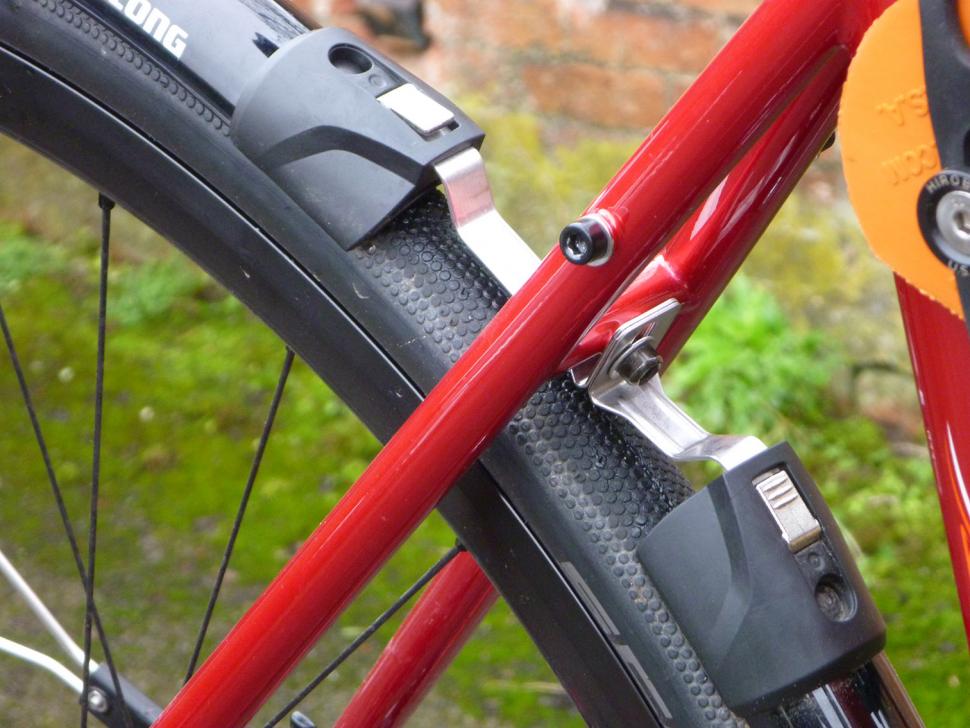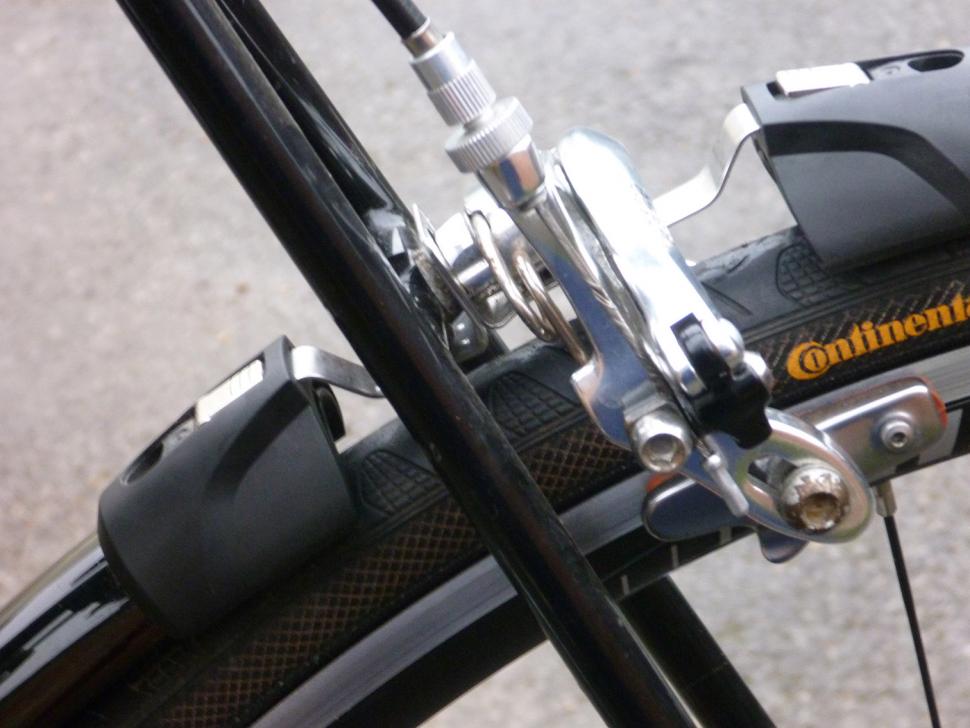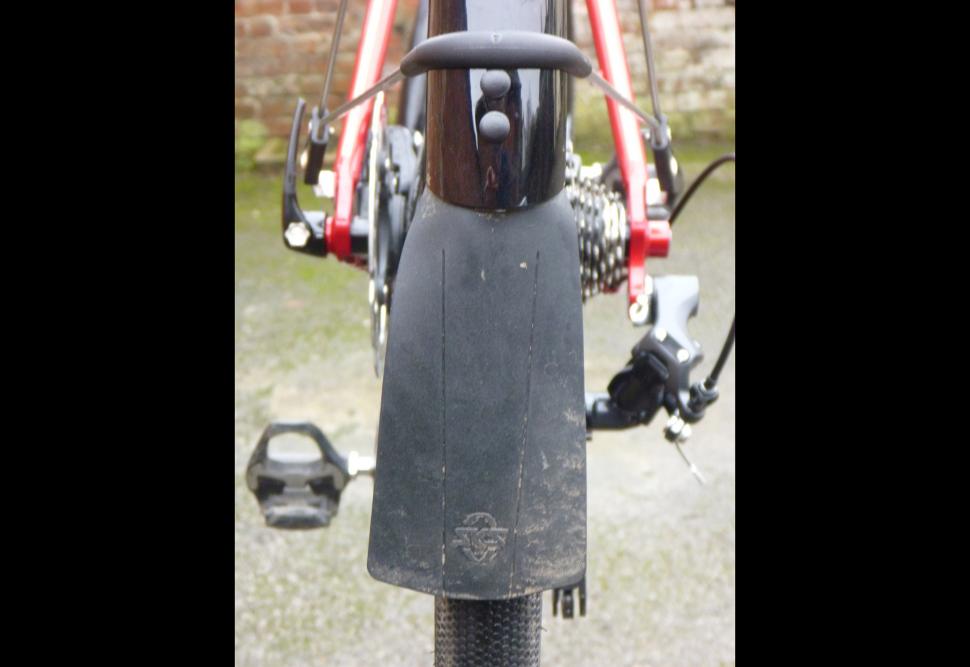The SKS Raceblade Long is a highly-regarded accessory, and this latest version (called the Mk II in some quarters) is an evolution of an instant classic. In 2012 Dave gave the original Raceblade Long (RBL hereafter) four stars, saying they were “absolutely miles better than nearly every other solution for your road bike”. I agree.
For the last three years I've clipped the RBLs on the moment it got remotely misty hereabouts. I've had them on and off my steel bike literally hundreds of times, and recently added mounts to a new carbon disc-braked acquisition.
> Find your nearest dealer here
I've broken several bits, generally through being an idiot. SKS customer service always came through, replacing broken parts free of charge every time. There's a five-year warranty for manufacturing defects as well. The great customer service makes SKS owners fiercely loyal to the brand and its products – pretty much everyone in my local club now runs RBLs, and whether or not they can be mounted is a key consideration come new bike time.
Technically, RBLs are meant for tyres of 25mm or under, but I've run them with 28mm for years with no issues. SKS says 25 because that can mean 28mm on some rims. I've found fitting them over 30mm Schwalbe G-Ones was possible if the stays are bent outwards just a smidge.
The RBLs reward a healthy willingness to fettle, especially on modern disc-braked bikes. The ability to bend and cut the stays to required lengths and adjust their position on the mudguard (or even remove one stay completely) means, with a good eye, they will go onto pretty much any bike. (A few years ago I wrote an article detailing how to fettle the original RBL to work on a 650B-wheeled bike – it's pleasing to note this hack is still relevant for the RBL II.)
Evolution cycle
Many modern frames cater for at least 28mm tyres and often come with mudguard mounts, making clearance underneath calliper brakes for the mounting brackets less of an issue. But with evolution comes unforeseen challenge, and this is where SKS needs to do a bit of homework.
RBLs are attached at two points – the brake bridge/fork crown using horizontally threaded bolts, and the hub. But with the advent of disc brakes and thru-axles, some bikes now lack a brake bridge or fork crown mount hole, or the brake bridge/fork has vertically-threaded holes, and thru-axles killed off the idea of slotting a metal bracket over a traditional QR skewer.
Forks in particular are challenging, with many of the threaded bosses being mounted partway up the legs, on either the inside or outside, and the fork crown hole often being recessed. The ace up the RBL sleeve is the high quality and strength of the metal hardware. Both the brackets and the stays can be bent into whatever shape you require, and cut/drilled provided you have access to a decent hacksaw or, ideally, a Dremel tool with a cutting disc.
New face, same DNA
The most obvious change to the RBL is the bulk of the clip that the brake brackets click into – what was previously pretty svelte is now chunky in order to accommodate a new enclosed metal clip mechanism. SKS advises that the change to metal was made as some users had experienced unintended disconnections and premature wear of the clips. The mechanism is now much stiffer – it's generally a two-finger/thumb job to release – and being metal the clips should withstand many more removals/fittings before wearing down.
The underside of the clip is now covered over to prevent ingress of crud, a failing of the previous design that meant, if you left them on for any period of time, they could become welded shut with cack.
Because the clip area is noticeably chunkier, the new metal brackets have a more pronounced vertical offset to lift the guard clear of the tyre. The upshot is, if you have multiple bikes with RBL brackets you can swap the guards between them, but putting new guards on old clips will require some bending to add the requisite 5mm of extra space.
The clips at the ends of the stays are also now metal. In the pack you get one long, one short and four medium brackets; for bikes with disc brakes this means you end up with large gaps where brake-bridge callipers should be, so it would be nice for SKS to include two or three more of the short brackets.
Another notable change is that the mudflap at the end of each guard is now riveted on and made of a flexible rubber material instead of being a screw-on affair. The plastic compound of the mudguard itself has also been updated to be stronger and less brittle in cold weather.
Fundamentally, once they are on and adjusted, they work very well indeed. The strong multiple stays hold the guards firmly without any rubbing, and should they get severely knocked, a bit of bending/use of a 2mm Allen key gets things back in shape.
> Check out our guide to the best mudguards here
SKS advises it is 'working on concepts' to mount RBLs to frames with thru-axles, elevated fork mounts or non-traditional brake bridges. Hopefully these will come later in 2016 in the form of aftermarket mounting kits so your RBLs can be rehomed to a new frame mount layout.
In the meantime, if you want quick-release mudguards that are solid, offer full coverage and can be fitted to just about any frame type, you still cannot beat the Raceblade Long.
Verdict
A timely update to a classic with better security/longevity, but the lack of disc brake frame mounting options needs addressing
road.cc test report
Make and model: SKS Raceblade Long Mudguard Set
Size tested: Wheel size: 28in (700C)
Tell us what the product is for, and who it's aimed at. What do the manufacturers say about it? How does that compare to your own feelings about it?
SKS says: "This ultra long clip-on mudguard set for road bike tyres up to max. 25 mm width protects you, whether you're riding your road bike in a warm summer rain or on solitary winter trips. The end of each mudguard extends to below the hub axles. This length ensures a full coverage, meaning you, and also the cyclist behind you, are spared from splashing. They can be perfectly adapted to the radius of the wheel by adjusting the length of the stays. Once the metal mounting brackets are fitted to the bicycle the mudguards can be clipped on and off in seconds making them ideal in case of need. Brackets attach at brake bolts and skewers."
Tell us some more about the technical aspects of the product?
color: black
weight: 493g (incl. fittings)
wheel size: 28 "
tyre width: 25 mm
length front fender: 525 + 150 mm
length rear fender: 805 + 150 mm
Only the pressure required to unclip lets them down.
They last ages, if you don't abuse them.
They aren't the lightest, but they aren't built to be.
Given the longevity, adjustability and functionality, the value is very good.
Tell us how the product performed overall when used for its designed purpose
Very well.
Tell us what you particularly liked about the product
The solidity of the new clips.
Tell us what you particularly disliked about the product
The effort required to operate the new clips.
Did you enjoy using the product? Yes
Would you consider buying the product? Yes
Would you recommend the product to a friend? Yes
Use this box to explain your score
It's a very good set of mudguards fully deserving of an 8, and would be closer to 10 but for a couple of things: it would be good if there were extra fittings in the box for disc-braked bikes, and for less pressure needed to release.
About the tester
Age: 42
I usually ride: Charge Juicer My best bike is:
I've been riding for: Over 20 years I ride: A few times a week I would class myself as: Expert
I regularly do the following types of riding: club rides, general fitness riding, fixed/singlespeed, mountain biking, and Dutch bike pootling
A timely update to a classic with better security/longevity, but the lack of disc frame mounting options needs addressing





